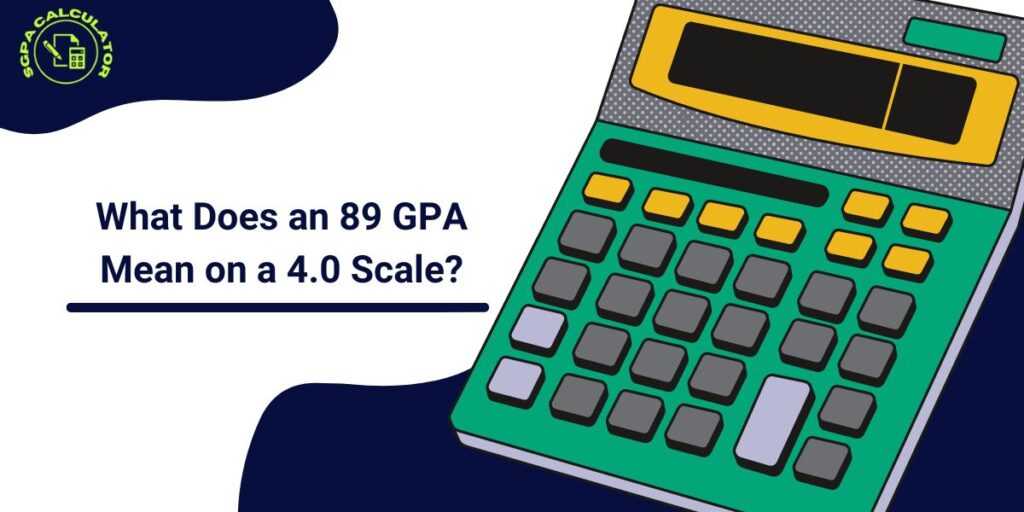Grade Point Average (GPA) serves as a fundamental metric in evaluating academic performance in many educational institutions worldwide. While GPA systems may vary across regions and institutions, the 4.0 scale is a widely recognized standard in numerous educational systems, particularly in the United States. However, interpreting a GPA score, such as an 89 on a 4.0 scale, requires a comprehensive understanding of its implications, grading criteria, and the context in which it is used. In this article, we delve into the intricacies of GPA, exploring what an 89 GPA means on a 4.0 scale and its significance.
Understanding the 4.0 GPA Scale
The 4.0 GPA scale is commonly used in the United States and several other countries. It typically ranges from 0 to 4.0, with 4.0 representing the highest possible GPA achievable. Here’s a breakdown of how grades correspond to GPA scores on a 4.0 scale:
A: Typically corresponds to a GPA range of 4.0 to 3.7.
A-: Usually falls within the GPA range of 3.67 to 3.99.
B+: Translates to a GPA range of 3.33 to 3.66.
B: Corresponds to a GPA range of 3.0 to 3.32.
B-: Typically falls within the GPA range of 2.67 to 2.99.
C+: Translates to a GPA range of 2.33 to 2.66.
C: Corresponds to a GPA range of 2.0 to 2.32.
C-: Typically falls within the GPA range of 1.67 to 1.99.
D+: Translates to a GPA range of 1.33 to 1.66.
D: Corresponds to a GPA range of 1.0 to 1.32.
D-: Typically falls within the GPA range of 0.67 to 0.99.
F: Usually corresponds to a GPA of 0.
Each letter grade has a corresponding GPA value, and these values are used to calculate a student’s overall GPA based on the grades they receive in individual courses.
Use Calculator: SGPA Calculator
Interpreting an 89 GPA on a 4.0 Scale
Now, let’s focus on understanding what an 89 GPA means within the context of the 4.0 scale. An 89 GPA typically falls within the range of a high B+ to low A- grade. To provide a more precise interpretation, let’s break it down further:
- 89-92: This range generally corresponds to a high B+ grade. While it’s just shy of an A, it still reflects strong academic performance.
- 93-96: Within this range, an 89 GPA would likely translate to a solid A-. It indicates a high level of understanding and proficiency in the subject matter.
- 97-100: At the upper end of the scale, an 89 GPA might signify a low A-, showcasing commendable achievement and mastery of the material.
Factors Influencing GPA Interpretation
Several factors can influence the interpretation of a GPA:
- Grading Policies: Different educational institutions may have varying grading policies, affecting how grades are assigned and consequently impacting GPA calculations.
- Course Difficulty: The difficulty level of courses taken can influence GPA interpretation. Achieving an 89 GPA in advanced or honors courses may be perceived differently than in standard courses.
- Weighted vs. Unweighted GPA: Some institutions use weighted GPA systems, where grades in more challenging courses are given additional weight. This can affect GPA interpretation and comparisons between students.
Use Calculator: SGPA To Percentage
Significance of GPA
GPA serves as a crucial measure of academic achievement and is often considered by colleges, universities, and employers during admissions and hiring processes. A high GPA can indicate diligence, aptitude, and commitment to academic excellence. However, it’s essential to recognize that GPA is just one aspect of a student’s overall profile and should be considered alongside other factors such as standardized test scores, extracurricular activities, and personal essays.
Conclusion
In conclusion, understanding what an 89 GPA means on a 4.0 scale involves considering its position within the grading hierarchy, the context of the educational institution, and various influencing factors. An 89 GPA typically reflects strong academic performance, falling within the range of a high B+ to low A-. However, its interpretation can vary based on individual circumstances and institutional policies. Ultimately, while GPA is an important metric, it’s essential to assess students holistically, taking into account their diverse talents, experiences, and aspirations.





